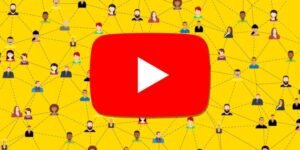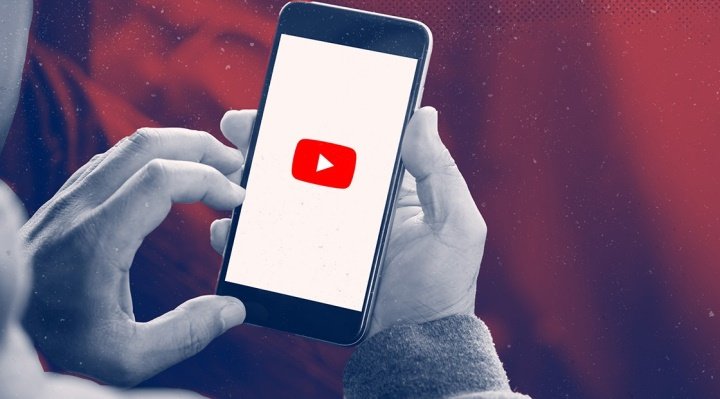In today’s digital age, platforms like YouTube have become integral to how we consume content, share ideas, and connect with others. But the question often arises: is YouTube a social media platform? While YouTube is primarily recognized as a video-sharing site, its functionalities, user interactions, and overall impact make it more complex than a simple media repository. In this article, we’ll explore the characteristics of social media, YouTube’s features, and how it aligns with the definition of social media.

Defining Social Media
To determine whether YouTube qualifies as social media, it is essential to first define the term. Social media refers to digital platforms that facilitate user-generated content, enable sharing and interaction, and foster community-building. Key characteristics of social media include:
- User-Generated Content (UGC): Content created and shared by users, ranging from text and images to videos and live streams.
- Interactivity: Features that allow users to engage with each other through comments, likes, shares, and direct messaging.
- Networking: Building connections and communities among users with shared interests.
- Accessibility: Platforms that are widely available and encourage participation from a diverse audience.
Examples of social media platforms include Facebook, Instagram, Twitter (now X), and TikTok, all of which embody these traits to varying degrees.
YouTube’s Core Features
YouTube, launched in 2005, was initially envisioned as a platform for sharing videos. Over the years, it has evolved significantly, introducing features that enhance interactivity and foster community engagement. Let’s examine the core aspects of YouTube to determine its alignment with social media characteristics:
1. User-Generated Content
At its heart, YouTube thrives on user-generated content. Creators upload videos on a wide array of topics, from educational tutorials and entertainment to personal vlogs and news commentary. This abundance of diverse content is a hallmark of social media platforms.
2. Interactivity
YouTube enables significant interactivity through likes, dislikes, comments, and shares. Users can engage directly with creators and other viewers, fostering discussions and debates. Features like live chat during premieres or live streams further enhance real-time interaction.
3. Community Building
YouTube allows creators to build dedicated communities around their channels. Subscribers can follow their favorite creators and participate in community polls, posts, and exclusive membership perks. Channels often cultivate a sense of belonging among their audience, much like traditional social media platforms.
4. Networking and Collaboration
YouTube supports networking and collaboration through its “Creator” community. Creators frequently collaborate on content, cross-promote each other’s channels, and engage in trends, creating a dynamic and interconnected ecosystem.
5. Accessibility and Global Reach
YouTube is accessible worldwide, catering to billions of users across various demographics. This inclusivity aligns with the accessibility criterion of social media.
How YouTube Differs from Traditional Social Media Platforms
Despite its alignment with many social media characteristics, YouTube also has unique attributes that set it apart from traditional platforms like Facebook or Instagram:
Primary Focus on Video Content
Unlike platforms that prioritize short posts, images, or microblogs, YouTube’s primary focus is on video content. While other platforms incorporate video, it is not their sole medium.
Search Engine Functionality
YouTube is the world’s second-largest search engine (after Google), enabling users to discover content through search queries. This search functionality is more akin to traditional web platforms than typical social media sites.
Monetization Opportunities
YouTube offers creators extensive monetization options, including ad revenue, sponsorships, and memberships. While other social platforms have introduced monetization features, YouTube’s system is more robust and integral to the platform’s ecosystem.
Long-Form Content
YouTube often caters to longer, more in-depth content compared to the bite-sized posts on platforms like Twitter or TikTok. This focus on long-form content fosters different types of engagement and consumption habits.
YouTube as a Social Media Hybrid
Given its unique characteristics, YouTube can be classified as a hybrid platform. It blends the functionalities of social media with those of a content distribution platform and a search engine. Here’s how:
Social Media Elements
- User-generated content.
- Interactivity through likes, comments, and shares.
- Community building via subscriptions and memberships.
Content Distribution
- High-quality content delivery.
- Focus on video as the primary medium.
Search Engine and Educational Tool
- Ability to discover content through keywords and tags.
- A vast repository of educational and informational resources.
The Evolution of YouTube’s Social Features
Over time, YouTube has incorporated more explicitly social features, bridging the gap between a video-sharing site and a social media platform. Some notable developments include:
YouTube Community Tab
Introduced to allow creators to post updates, images, and polls, fostering more interaction outside of video content.
YouTube Stories
A feature similar to Instagram and Snapchat Stories, enabling creators to share short, ephemeral content.
YouTube Shorts
In response to the rising popularity of TikTok, YouTube introduced Shorts, a format for quick, engaging videos. This feature emphasizes its commitment to adapting to social media trends.
Direct Messaging (Now Retired)
Although YouTube briefly introduced a direct messaging feature, it retired this functionality in 2019, suggesting a partial retreat from traditional social media elements.
Public Perception of YouTube as Social Media
The way users perceive YouTube also influences its classification. Many people consider YouTube as:
A Social Media Platform
- Due to its interactive nature and community-building aspects.
A Content Platform
- Some see it primarily as a repository for video content rather than a social network.
A Blend of Both
- Many acknowledge its dual role as a social media platform and a content distribution site.
Conclusion: Is YouTube Social Media?
The evidence suggests that YouTube does qualify as a social media platform, albeit with unique attributes. Its emphasis on user-generated content, interactivity, and community engagement aligns it with the core characteristics of social media. However, its focus on long-form video content, search engine functionality, and robust monetization features differentiate it from traditional social networks.
Ultimately, YouTube occupies a hybrid space in the digital ecosystem, serving as both a social media platform and a comprehensive video-sharing and search engine tool. Whether viewed through the lens of a creator, viewer, or marketer, YouTube’s impact on modern communication and community-building is undeniable.











